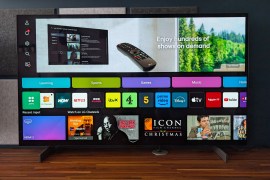STUFF.TV FAST FACTS – OLED TV
What is it?Organic Light Emitting Diode, a screen technology to rival LCD and plasma.Why should I care?Unlike LCD, which requires a backlight, OLED pi

What is it?
Organic Light Emitting Diode, a screen technology to rival LCD and plasma.
Why should I care?
Unlike LCD, which requires a backlight, OLED pixels are self-illuminating, allowing displays to be incredibly thin (0.3mm so far) and even flexible – perfect for phones, cameras and PMPs. OLED screens also offer superior brightness, viewing angles, response times (0.01ms as opposed to 4ms) and contrast ratios (1,000,000:1) to LCD, so an OLED panel will likely replace your living room TV in the not-too-distant.
The downsides?
Large displays cost a fortune and have limited life, hence the 11in picture provided by Sony’s XEL-1. However, both points will soon be moot: OLED will eventually be cheaper than plasma and LCD, with superior lifespan and lower power consumption.
What’s AMOLED?
You may see AMOLED used more frequently than OLED. It stands for Active Matrix OLED. ‘Active Matrix’ is a method for controlling individual pixels.
LED vs. OLED
LED TVs aren’t inorganic OLED screens; rather, they’re LCD screens backlit with LEDs. They offer better colours, black levels and contrast ratios than fluorescent-lit LCDs, thanks to their being able to control the intensity of individual LED backlights. They can also have impressively thin chassis. However, they can’t rival OLED’s viewing angle, flexibility or colour richness.
When is it coming?
It’s already here, but expect 40in panels before the year’s end.



